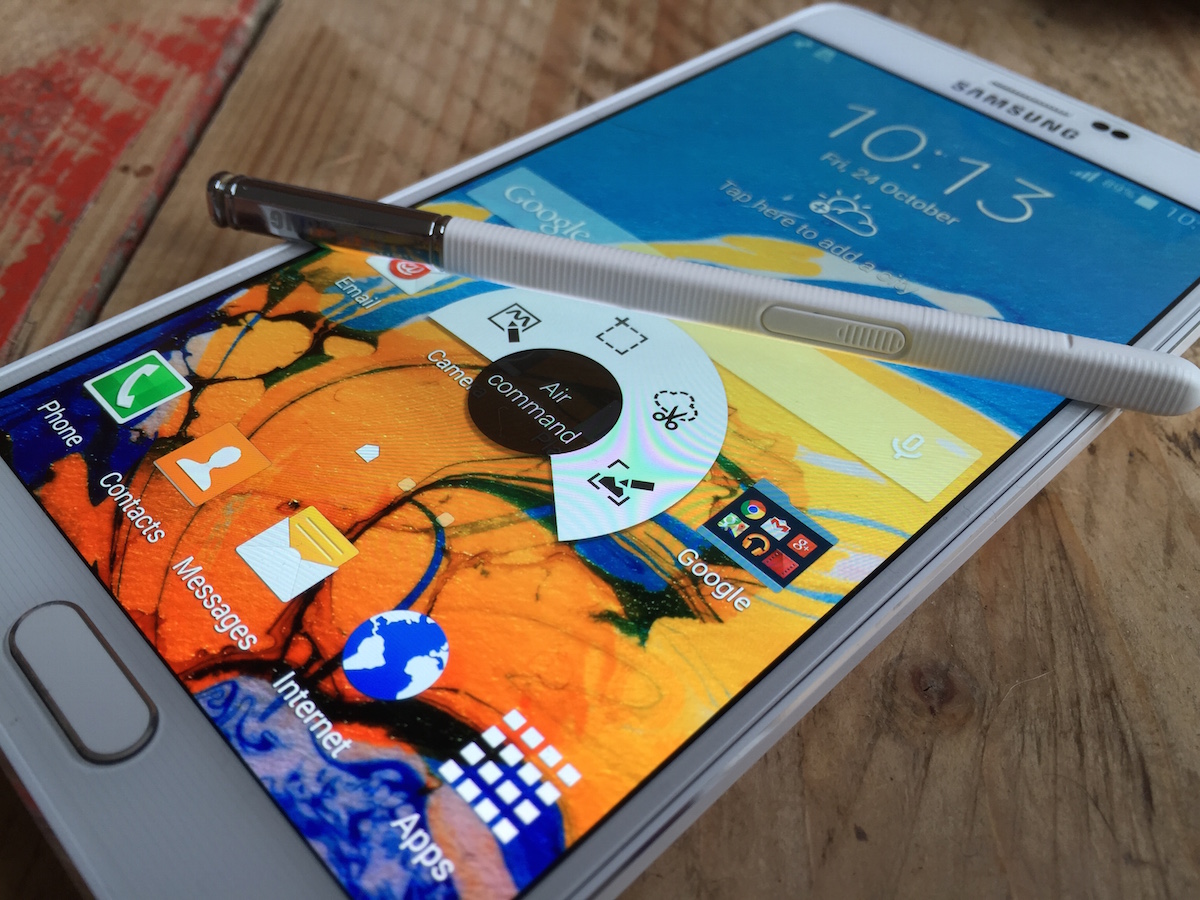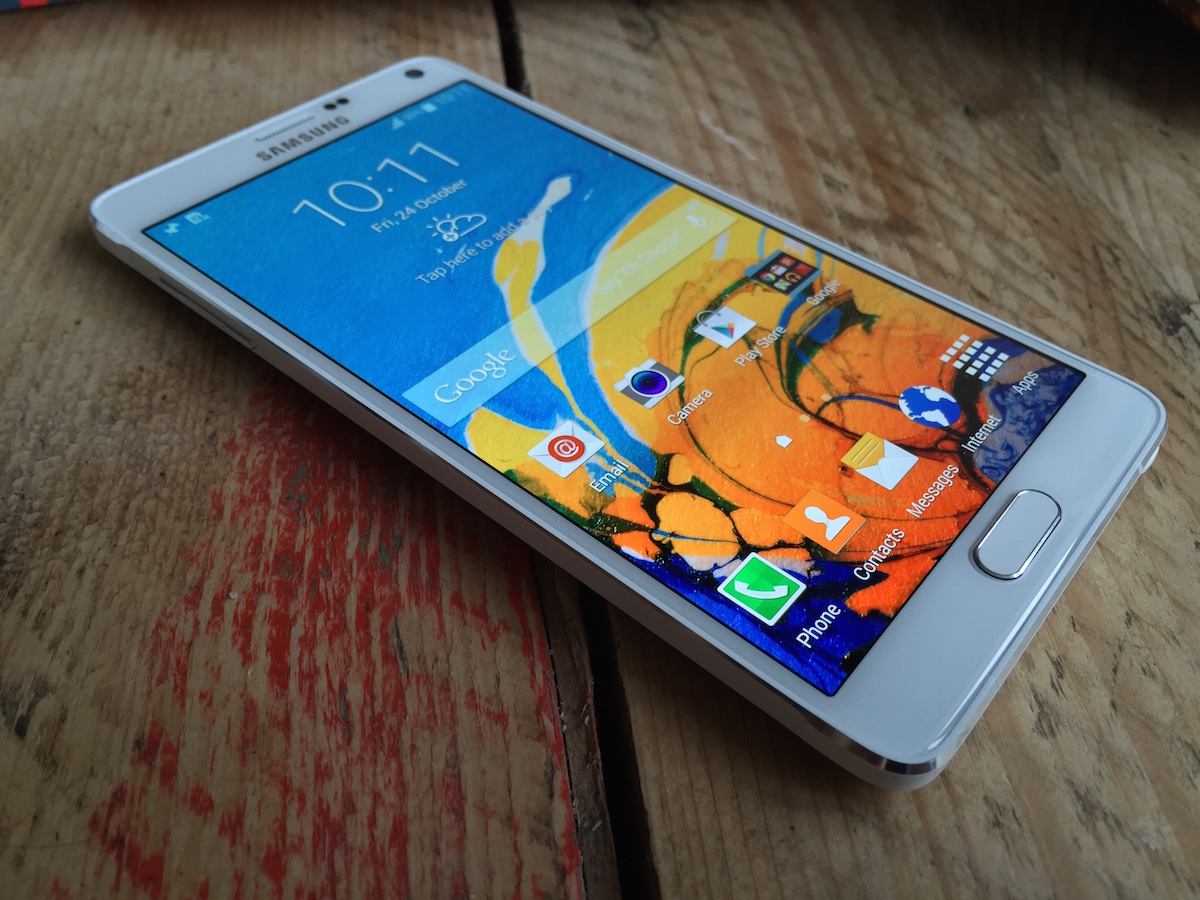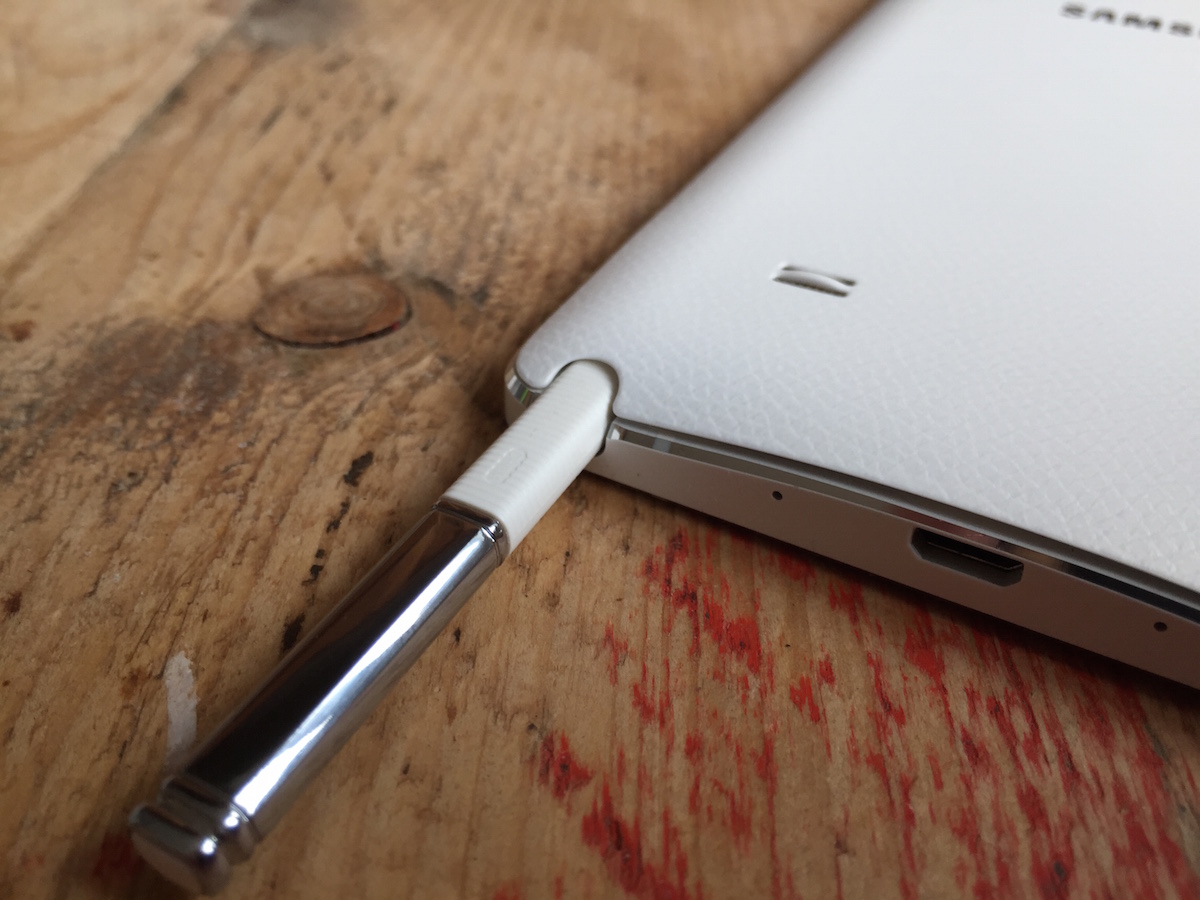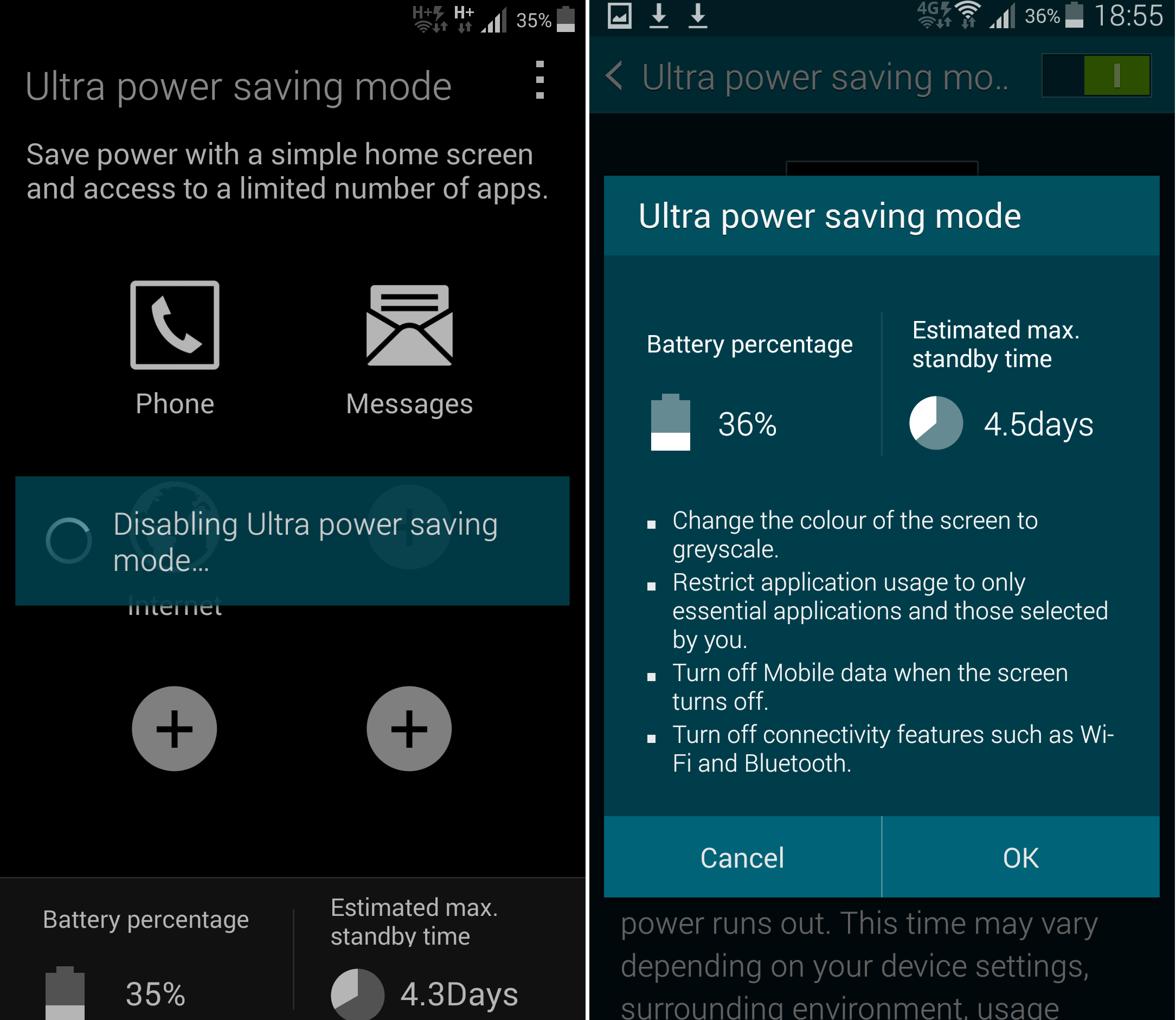Samsung Galaxy Note 4 review
A stunning phablet with a class-leading display, plenty of power & great battery life


Simply the best phablet on the market.
-
+
Excellent display; Plenty of power; Good storage; Great battery life; Superb pen input and multitasking; Nice camera
-
-
Expensive; Tacky back panel; Ships with Android KitKat

Update - If you thought the Note 4 was gorgeous, prepare to be even more amazed. It's big brother, the Samsung Galaxy S6, has landed - and it is glorious. Not only is the QHD screen stunning to look at, it's also got a curved Edge variant, just like the Note 4. It's a flagship device truly worthy of Samsung's legacy as an industry leader, and we love it to bits.
It's also sporting Samsung's Knox security sytem, a feature that is also set to appear in BlackBerry's new smartphones, launching later this year.
From the moment you unwrap the Galaxy Note 4, it's clear Samsung has gone all out to retain its position as the top-tier phablet maker.
Specifications on paper are tantalising. The Note 4 has a large 5.7in Super AMOLED display, sensitive S-Pen, plenty of storage and claims a long battery life. Available for 539 SIM-free, the device is 100 cheaper than its arch-rival the iPhone 6 Plus, and this is just one of the reasons why the Note 4 is top of our best smartphones list.
Display and design
The 5.7in Super AMOLED display is the best panel Samsung has produced to-date, with the firm addressing complaints regarding inaccurate colour reproduction and tinting. However, this retains the dimensions of its predecessor, the Galaxy Note 3, but with a big boost in resolution.
Whites are pure with no yellow, green, or blue tinting, and although the device retains Samsung's trademark saturated/high-contrast style, it looks good. The resolution has been upped to a full 2560 x 1440 pixels at 515 pixels-per-inch (ppi), putting it in the same territory as LG's G3 in terms of clarity, although it lacks the artificial sharpening effect seen on LG's device.
Sign up today and you will receive a free copy of our Future Focus 2025 report - the leading guidance on AI, cybersecurity and other IT challenges as per 700+ senior executives

The use of Super AMOLED technology means contrast is superb, producing wide viewing angles, great readability in bright lighting conditions, as well as deep blacks and dark tones.
Brightness is also excellent and text is pin-sharp on this device. With indoor usage you're looking at a maximum of 340cd/m2 but take the device outside and a readability mode kicks in cranking this up to the 500cd/m2 mark.It's not as bright as LCD-based counterparts like the iPhone 6 Plus (566cd/m2 max) but the Note 4 is bright enough for all conditions.
Things are a little more muted on the design front, with Samsung making minor tweaks rather than wholesale changes.
There's a silvery trim around the edges of the device, corners are more rounded its predecessor and the display glass features a bevelled edge, which creates a slight gap between screen and chassis, the so-called GapGate. Personally, we didn't find this to be a problem because it looks good.

The bezel around the display remains wafer thin (5mm) to cram the 5.7in panel into as little bodywork as possible. The Note 4 is lightweight (176g) for its size, the balance is good and it doesn't feel cumbersome to use despite the big display. The device measures153.5 x 78.6 x 8.5mm, around the same size as the Note 3 and smaller in width and depth than the Galaxy Note 2.
The main foible is the back panel design. It may have lost the ghastly fake stitching but the faux leather texture remains. Sadly, the plush soft-touch feel has been removed and the result is rigid, tacky feeling plastic. Unlike the Galaxy S5, the Note 4 is not a waterproof or dustproof device.
As with previous models the S-Pen stylus is housed in a special socket on the lower edge, near the microUSB data and charging port. MicroSD and SIM cards can be accessed inside by removing the back cover, while a 3.5mm headphone jack sits on the top edge.

The handset still uses a physical home key flanked by capacitive back and multitasking keys. However, the positioning of some physical buttons has been moved. The power key is situated on the right-hand edge towards the top, but the volume rocker sits on the opposite side. This does have the advantage of allowing a thumb and finger to sit on either key regardless of which hand you grip the phone with.
The home key also sports a fingerprint scanner that can be used to safegaurd access to the phablet and its apps. This can be used with third-party sofftware such as LastPass and Paypal. However, a user has to swipe their finger on this in order for it to work and this isn't always successful.
Two-day battery life
The Galaxy Note 4 packs a 3,220mAh removable battery cell, so you're able to swap out for a spare unit if caught short, or when it inevitably starts to wane over time. In video testing with continuous playback from 100 per cent charge, with Wi-Fi on and full brightness, the Galaxy Note 4 lasted 8 hours 20 minutes before dying.
However, this isn't the only weapon in the Galaxy Note 4's battery arsenal, as it also sports the Galaxy S5's Ultra Power Saving mode. Switching this on takes a few moments, but once activated the display will go black and white, and you'll be limited to using a handful of applications such as calls and texts.
This extends battery life considerably, making it an ideal mode to switch to if you know you'll be away from a charger for a long time.

With moderate usage we found the Galaxy Note 4 lasted close to two days on a single charge. Power users are still likely to need a top up at the end of each day.
16-megapixel camera
Samsung has started producing its own camera sensors and the Note 4 use the same ISOCELL sensor and 16-megapixel setup as the Galaxy S5. But it goes one further, because now there's an optical image stabilisation (OIS) module included. Other features include an LED flash, 4K video capture, and HDR. It's also loaded with Samsung's existing camera UI with a raft of built-in modes we've seen on previous handsets.
With an f/2.2 aperture, the resulting image quality is impressive. The stabilisation does a good job of keeping snaps sharp even in less-than-favourable shooting conditions. As usual with Samsung tech, colour is rich and saturated with high contrast and robust dynamic range, even outside of HDR mode, but the result is an image that pops nicely.
The easy of use means even amateurs can get excellent results. Sure, it's not got the raw imaging muscle of Sony's Xperia range or Nokia's PureView Lumias, but even so, it's providing fantastic image quality with effortless operation.

-
 Qualcomm the data center with $2.4 billion Alphawave Semi acquisition
Qualcomm the data center with $2.4 billion Alphawave Semi acquisitionNews The move sees Qualcomm absorb Alphawave Semi’s portfolio of custom silicon, high-speed connectivity solutions, and chiplets
By Daniel Todd Published
-
 ‘If software development were an F1 race, these inefficiencies are the pit stops that eat into lap time’: Why developers need to sharpen their focus on documentation
‘If software development were an F1 race, these inefficiencies are the pit stops that eat into lap time’: Why developers need to sharpen their focus on documentationNews Poor documentation is a leading frustration for developers, research shows, but many are shirking responsibilities – and it's having a huge impact on efficiency.
By Ross Kelly Published
-
 OpenAI says GPT-5.2-Codex is its ‘most advanced agentic coding model yet’ – here’s what developers and cyber teams can expect
OpenAI says GPT-5.2-Codex is its ‘most advanced agentic coding model yet’ – here’s what developers and cyber teams can expectNews GPT-5.2 Codex is available immediately for paid ChatGPT users and API access will be rolled out in “coming weeks”
By Ross Kelly Published